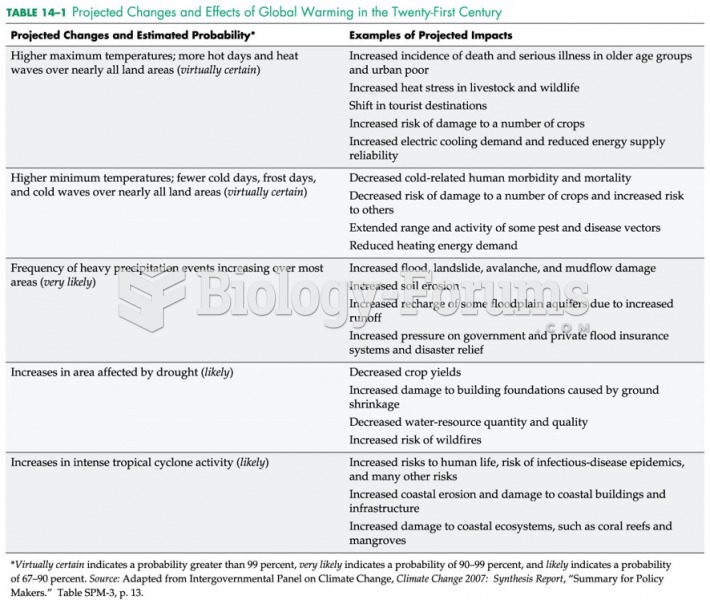Answer to Question 1
Answer: Research and experience have shown that children are most at risk of dying of maltreatment during the first four years of life. In fact, 40 percent of children who are victims of fatal maltreatment are infants (younger than one year old), and 75 percent are younger than five years old. The Centers for Disease Control and Prevention have reported that the chances of being murdered are greater on the day of birth than at any other point in a person's life. The deadly combination of an angry adult and a physically vulnerable child can result in fatal or life-threatening injuries to the child. Acute maltreatment means that the child's death is directly related to injuries suffered as a result of a specific incident or abuse or act of negligence. In chronic maltreatment cases, the child's death is directly related to injuries caused by neglect occurring over an extended period of time. Many maltreatment deaths involve a delay between the time the child sustains the fatal injury and the subsequent death of the child. Although this may also be true with any serious injury, it often happens in cases of abuse of head trauma and in cases involving internal injuries to the chest and abdomen. Note that abusive head trauma (AHT) is the most common type of fatal injury and maltreatment death. Another common factor in maltreatment cases is the absence of a witness to the actual incident of abuse or neglect that caused the child's life threatening or fatal injury. Accomplices are also rare in maltreatment cases. Maltreatment murders of children rarely involve traditional weapons such as firearms, knives, or blunt objects. Typical weapons include hands, feet, household items, and scalding water. Often, death results and injuries are caused by shaking, slamming, blunt-force trauma, scalding, starvation, neglectful supervision, and various other forms of physical abuse and neglect. In most cases of fatal child maltreatment, trace evidence such as fingerprints and DNA will be of far less value than it might be in other crimes.
Answer to Question 2
Answer: The child may reveal the abuse intentionally or accidentally. Family members who observe caregivers interacting with children may suspect or witness abuse. Professionals involved with the child may also suspect abuse based on behavioral, emotional, or verbal clues. Additionally, neighbors may see, hear, or suspect maltreatment based on their observations of the family. The three largest percentages of report sources were from such professionals as teachers (16.4 percent), law enforcement and legal personnel (16.7 percent), and social services staff (11.5 percent). Anonymous sources (9.0 percent), other relatives (7.0 percent), parents (6.8 percent), and friends and neighbors (4.4 percent), accounted for nearly all of the nonprofessional reporters. All states have established mandatory child abuse reporting laws that were designed to ensure that the agencies tasked with protecting children's welfare reported the incidents. Most child protective services maintain a 24-hour, toll-free hotline to receive reports of suspected child abuse. Reports to law enforcement agencies are usually made to emergency 911 dispatchers.







